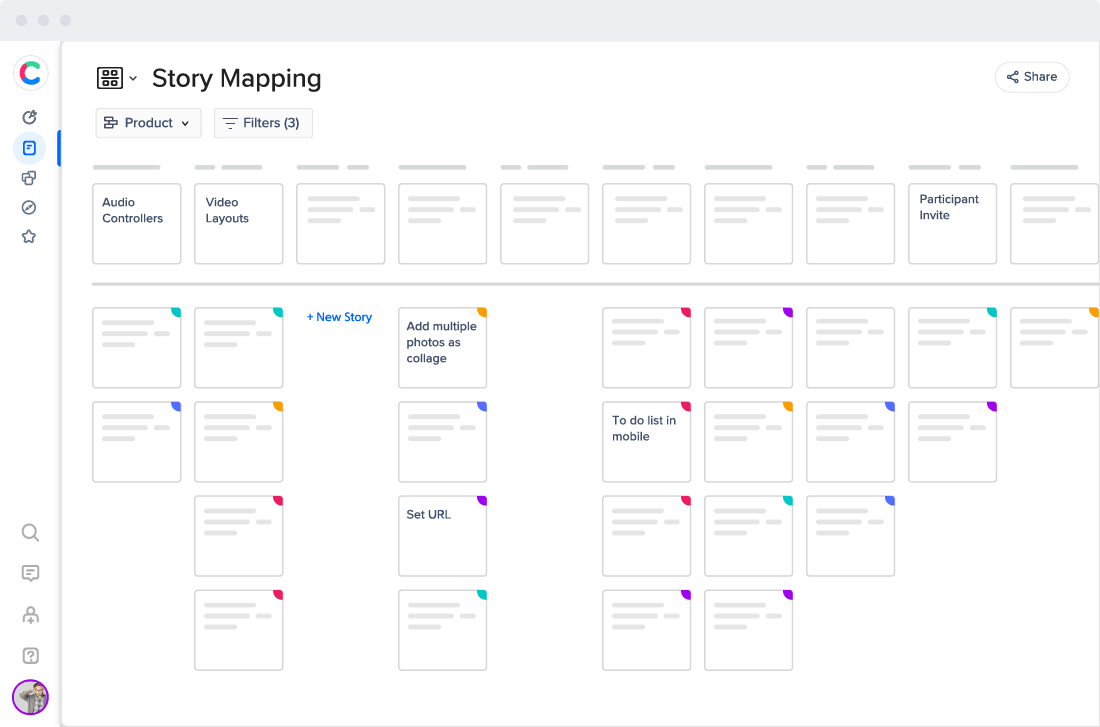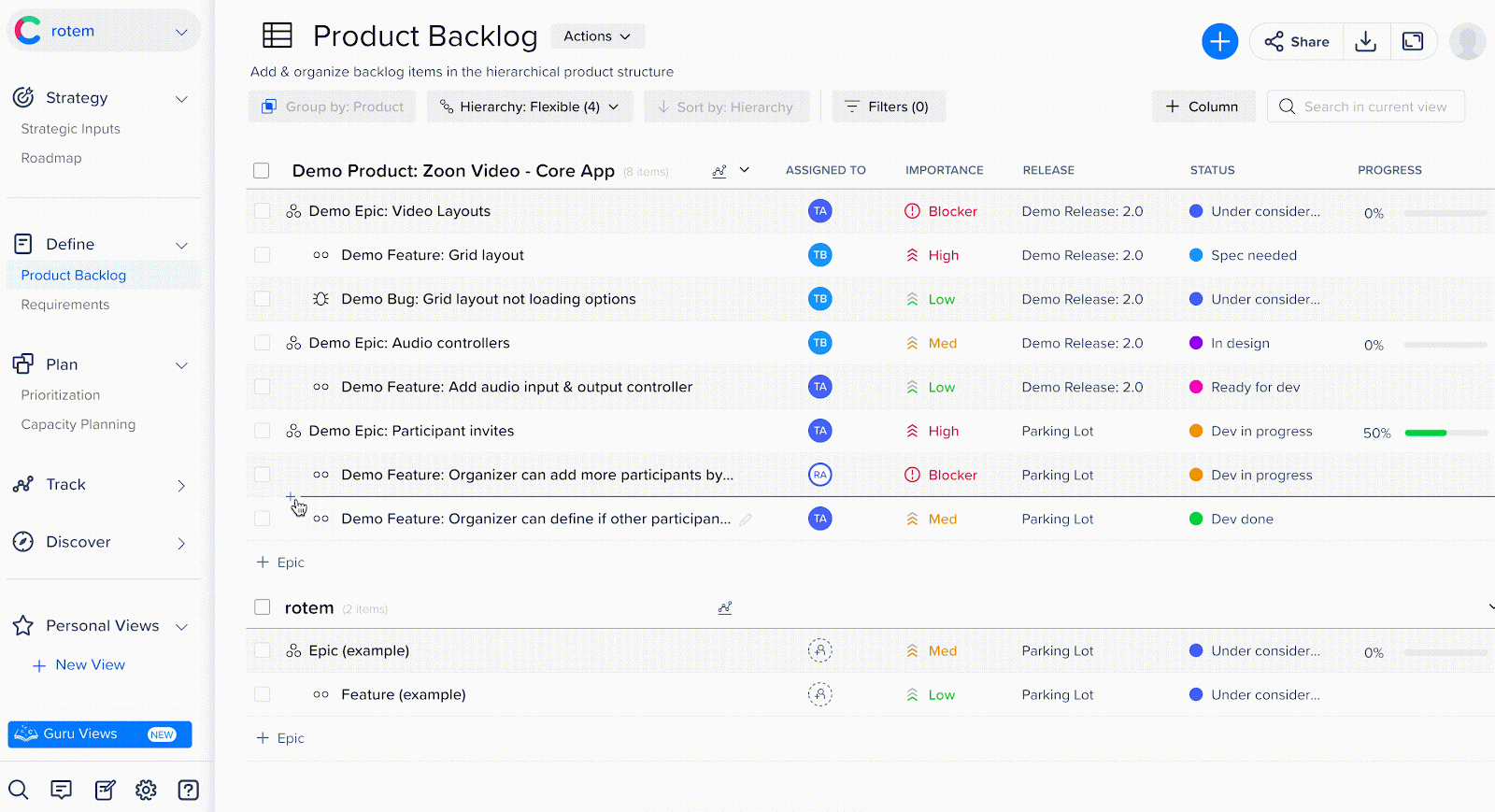Home > Blog > Why Product Ideation Beats Brainstorming Every Time
Why Product Ideation Beats Brainstorming Every Time

Aren’t Product Ideation and Brainstorming the Same Thing?
A reporter once asked actor Jim Carrey if he improvised most of his lines in movies. Carrey said no. He explained that if he thought of a line during filming that was funnier than the one in the script, he’d try it out. But he knew his job was to show up to the set each morning having memorized his scripted lines and be ready to deliver them. Even a comedic actor as talented as Jim Carrey couldn’t just wing it – hoping for inspiration in scene after scene while an expensive movie crew stood around waiting for him to think up something worth filming.
A similar dynamic is at play whenever your product team wants to conceive new product ideas. And as we’ll explain, the solution is a trusted product ideation framework – not a brainstorming session. Here’s why.
Brainstorming is an event (and usually a one-time event) rather than a structured, ongoing process. In fact, the whole notion of a brainstorming session is that everything is open for discussion. Many brainstorming sessions begin with the meeting’s leader announcing that “There are no bad or off-limits ideas.”
But just as Jim Carrey can’t brainstorm new lines or scenes in the middle of a costly movie set, when you gather a bunch of colleagues in a room to brainstorm, the meter is running. That session is costing your business time, money, and the opportunity costs of whatever else your coworkers in the room can’t be doing at that time to support your business objectives. So, to the extent that you need to come up with ideas for products or features, you need a more reliable, repeatable process than a free-for-all brainstorming session.
That process should be a product ideation framework. In this short post, we’ll provide you a repeatable, structured approach to product ideation, and we’ll even give you a few clever hacks for ideating product ideas when you don’t have a team to help you.
The good news is, like most aspects of product planning, creating an effective product ideation process doesn’t need to be complicated.
How to Ideate a Product
This approach will work for ideation in agile product development whether you’re trying to create a new product from scratch or enhance an existing product with new functionality.
1. Identify a problem.
A successful product is almost always an answer to a problem, challenge, inefficiency, or shortcoming your users face in their jobs or lives — even if they’re not aware yet that they’re facing these issues, or they assume their current approach is the best they can do.
Your first step in product ideation should be to look for these types of voids in the market. We’ll assume you already know who your target customers are and that you’re communicating with them and asking them to tell you about their needs, wants, frustrations, and challenges.
If you haven’t yet gone through these exercises, your first step will be to create detailed user personas to better understand the people whose challenges you’re hoping your product can solve.
2. Generate and capture ideas on your own.
Now that you’ve identified a problem worth solving in the market, you’ll want to rev up your idea engine and start thinking of ways your product team could address that need. But before you enlist the help of your team, we’d recommend capturing ideas on your own first.
In this early stage, you don’t want to hold back. Throw everything you can think of at the problem and jot down all ideas. Censoring yourself before you capture an idea because it sounds unfeasible or just too wild is a great way to shut down your creative muse. You can cross out the crazy ideas later. Right now, just capture.
There are many ways to find innovative product ideas.
You can find inspiration for your product ideation in lots of places:
- Talking to your sales or customer success teams
- User or prospect surveys
- Reading your competitors’ product reviews
- Reading what users say about your product in reviews or online forums
- Market analysts reports (these often contain great product ideas written in the form of where the existing solutions on the market fall short)
But remember, this isn’t a free-for-all brainstorming session. You want to apply structure to every stage of your product ideation process. For this stage, that means finding a way to tag and categorize each idea – and, ideally, connecting it to a larger business objective – rather than simply trying to scribble everything on a giant whiteboard in no particular order.
And that brings us to yet another reason that you’ll want a purpose-built product management platform. Using the right software here can make the product ideation process much more efficient and productive for your team.
With craft.io, for example, we’ve developed an intuitive drag-and-drop environment that mirrors the familiar creative board filled with Post-Its in various columns.

Book a best-practice session with a Product Executive
Using craft.io really feels like you’re standing in front of a blackboard (but with all the comforts of digital ideation tools). We also connected the backlog tab to the definition and roadmap section, making it possible to push the good ideas to the next stage of product creation quite seamlessly, as the process ought to be.
3. Bring in more creative minds on your team.
Now that you’ve captured your initial ideas, it’s time to enlist help. And this doesn’t need to be product team members exclusively. In fact, it shouldn’t be.
Build a product ideation group with knowledgeable stakeholders across your team — maybe someone from sales, someone in customer success, someone in dev, and a few of your more thoughtful and creative product team members. Everyone will bring their unique experience and problem-solving approach to your ideation session — which is exactly what you need.
Group ideation might seem similar to brainstorming, but it will produce different results, especially given an extended product ideation process.
Pro tip: Be selective in who you choose for your ideation team.
The other success factor in ideation workshop techniques is framing. As Product Manager, you have a say in who gets to participate in the ideation process. Leverage this prerogative to build a strong, effective team. You can handpick the more constructive, creative thinkers from your teams and work to create a group dynamic that encourages discussion and amplifies originality.
Another aspect of framing the ideation process is providing clear borders of thought. When you define the perimeters of the thought process, you get much more accurate results. Moreover, limitations on subjects and themes can often inspire the most creative ideas – finding a way around limitation is the greatest creativity exercise.
How to decide which ideas should be further explored and which should be shelved? That is a huge subject that deserves a blog post of its own. It involves research, feedback, A/B testing, and prioritization.
Exploring Product Ideation on Your Own
But what if you don’t have access to your team? Or what if you want to conduct an early product ideation exercise on your own, before assembling your team for feedback and additional ideas?
Here are a few techniques we’ve heard successful product professionals use to jumpstart their creativity in the early stages of ideation.
1. BicHok (Backside in Chair, Hands on Keyboard)
This is a popular and widely praised method among writers. The idea is that when you are physically in position to ideate, your mind gets in position as well, and soon the ideas start to flow.
Many people find that the opposite of this approach – getting yourself up and moving (for a walk or drive, for example) – also works. In fact, you might find that your creative muscles warm up more quickly and reliably when you’re in motion than when you sit down to stare at a blank screen (or, better yet, your craft.io backlog).

Caution: One downside of the get-up-and-move approach is that you’ll have more difficulty documenting your ideas as they come to you.
2. Methodical research.
This is simply the old-fashioned process of studying industry trends, competitive products, and what your users (and your competitors’ users) have to say about their experiences.
You can find inspiration everywhere – including complaints or negative reviews from users.
As Bill Gates famously said, “Your most unhappy customers are your greatest source of learning.”
3. Visual structure.
Finally, for visually oriented product professionals, a valuable hack is to put your ideas into visual form. The famous Post-It technique helps give your thoughts a shape and a path. It channels thinking into context, rather than the amorphous everythingness that sometimes accompanies “out of the box” think-events.
One more reason to try a product management platform like craft.io.
Try craft.io for free





